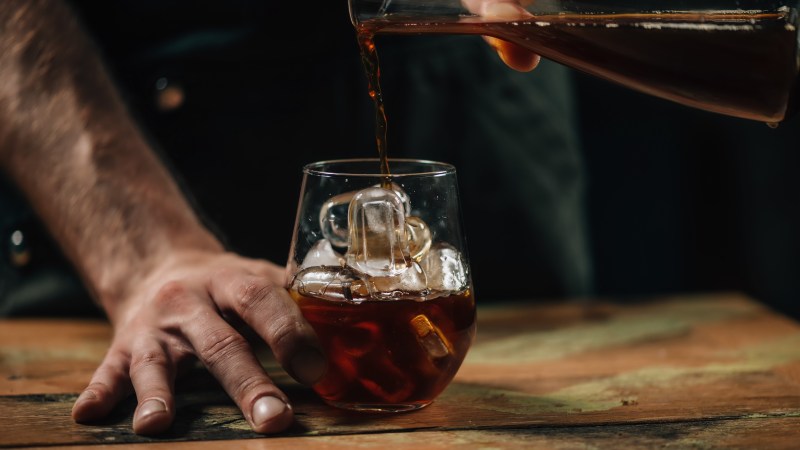Made by steeping coffee grounds in cool water, cold brew coffee is a refreshing go-to cold coffee of choice for many coffee drinkers. Though typically enjoyed as a cold beverage, you may wonder: Can you heat up cold brew coffee? This unique coffee drink’s appeal comes from its low acidity and high caffeine content — all of which results from its long, cold-water steeping process that lasts between 12 and 24 hours.
But what if you prefer to enjoy it as a warm beverage? Surprisingly, when heated correctly, cold brew can be heated to enjoy as warm coffee. Here’s how to make your cold brew coffee taste delicious when warmed.
Can you heat up cold brew coffee?

As a short and quick answer, cold brew coffee can be heated for optimal enjoyment. But it’s not as simple as throwing your cold brew in the microwave and enjoying it warm. The method in which you heat your cold brew coffee matters a great deal in terms of maintaining its flavor. You’d think it’s as simple as just heating it — yet heating it at too high of a temperature or for too long can make your coffee taste way too bitter.
How to heat up cold brew coffee

Heating cold brew causes chemical reactions to occur, as well as evaporation, which is a quick way to totally ruin your perfect cup of cold brew coffee. Here’s how we recommend heating cold brew coffee to retain its full-bodied flavor.
Stovetop
Heating your cold brew coffee on the stovetop is one of the best options. If using cold brew concentrate, mix with water according to your desired ratio in a kettle or saucepan. You can also do this for cold brew that’s not in concentrated form. Using low fire, heat until the concoction begins to steam and then simmer for another minute before removing from heat. Pour it into a cup and let it sit until it’s cool enough to drink.
Although it’s natural to want to turn to the microwave to easily heat your cold brew, think again before you try this “quick” option. You can use it to warm up cold brew coffee in a microwave-safe mug; however, this method will change the way your coffee tastes. If microwaving your coffee happens to be your only option, be sure to do so in small increments and mix in between heating intervals.
Electric kettle
Have an electric kettle on hand? Many people don’t realize that the electric kettle can be used to warm liquids beyond just water. Many electric options such as the Saki Luna Electric Kettle make warming up cold brew super simple. With just a flip of a switch, you can warm up your cold brew.
When using an electric kettle to warm up cold brew, be sure to stop it before it begins to boil. Boiling is too warm for cold brew and will cause the taste to become too bitter. It’s a good time to turn it off once you begin to see steam. This method may not work the best with cold brew concentrate, which could be too concentrated and end up sticking to the coils of your electric kettle. You can also use your electric kettle to warm water to mix into your cold brew (at room temperature), such as the dilution method.
Dilution
To retain its flavor and avoid cold brew becoming too bitter, you can also slightly dilute it with water to warm it. Some people find that diluting cold brew by adding hot water (as opposed to warming the cold brew coffee itself) results in a delicious cup of warmed cold brew.
Tips for warming up cold brew

For those who enjoy creamy coffee, adding a splash of milk or cream to your coffee before heating can help prevent bitterness and create a more full-bodied flavor. Some people also add a touch of salt to balance out the flavors in the coffee as well.
It’s also recommended to go slow as you warm up your cold brew coffee. By working in small increments, you’ll have better control over the temperature and avoid the coffee becoming too hot. Once it’s too hot, the bitter taste is hard to undo. One of the reasons cold brew is so delicious is its low acidity, but if it turns too bitter, it may not be worth drinking.
After some trial and error, you’ll soon learn the best ways to warm up cold brew to your taste preferences. Experimentation is key, as every coffee lover has different needs.




